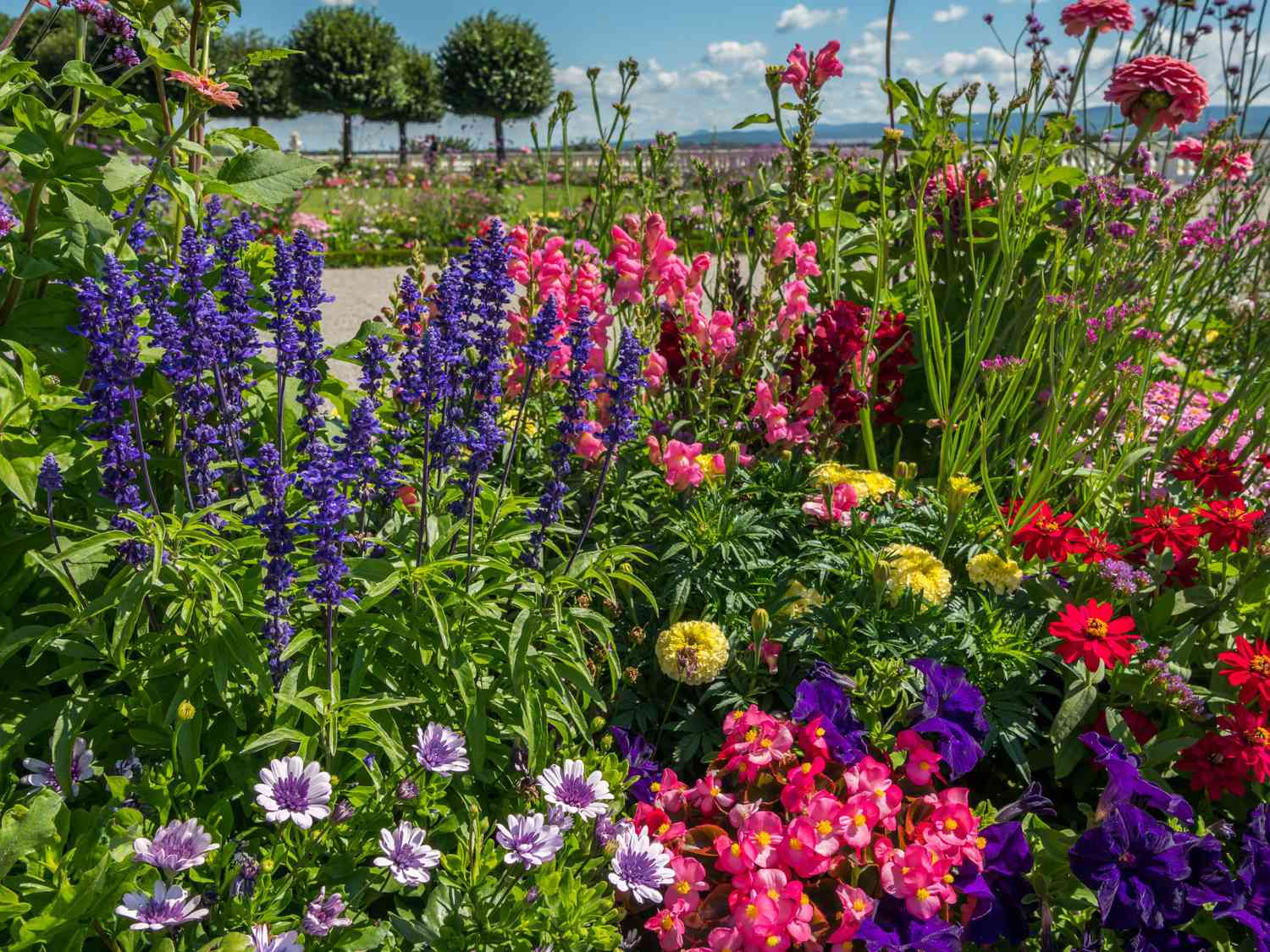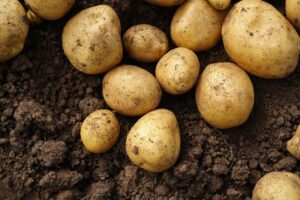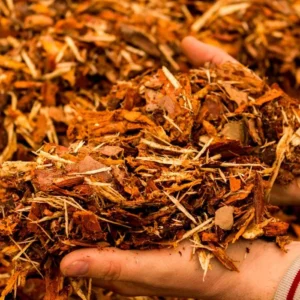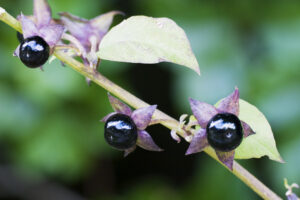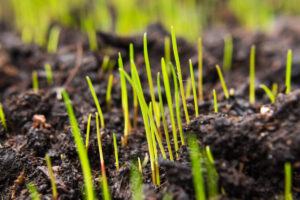The Best Perennials for Full Sun: A Complete Guide
Are you looking to transform your sun-drenched garden into a vibrant, low-maintenance paradise? Full-sun perennials offer the perfect solution, providing years of colorful blooms with minimal effort. In this comprehensive guide, you’ll discover the most resilient and stunning perennials that thrive in bright, sunny conditions across the United States.
Why Choose Full-Sun Perennials?
Before diving into specific plant recommendations, it’s important to understand what makes full-sun perennials such an excellent investment for your landscape:
- Cost-effective: Unlike annuals, perennials return year after year, offering better long-term value
- Eco-friendly: Established perennials typically require less water and fewer resources
- Time-saving: Reduced need for replanting saves you hours of garden work each season
- Biodiversity: Many native perennials support local pollinators and wildlife
According to the USDA Natural Resources Conservation Service, incorporating native perennials into your landscape can significantly reduce water usage and support local ecosystems. You can learn more about sustainable landscaping practices through their Plant Materials Program.
Understanding Your Sun Conditions
Full sun typically means a location that receives at least 6-8 hours of direct sunlight daily. Before selecting plants, take time to observe your garden throughout the day to identify truly full-sun areas. Remember that sun patterns change seasonally, so what’s sunny in summer might be shadier in spring or fall.
Top 20 Perennials for Full Sun by USDA Hardiness Zone
The following table organizes some of the best full-sun perennials based on the USDA hardiness zones where they perform best. This will help you select plants well-suited to your specific climate region.
| Perennial | USDA Zones | Height | Bloom Time | Special Features |
|---|---|---|---|---|
| Lavender (Lavandula) | 5-9 | 1-3 ft | Summer | Fragrant, drought-tolerant, deer-resistant |
| Black-Eyed Susan (Rudbeckia) | 3-9 | 2-3 ft | Summer-Fall | Native, wildlife-friendly, long blooming |
| Coneflower (Echinacea) | 3-9 | 2-4 ft | Summer-Fall | Native, medicinal, attracts butterflies |
| Russian Sage (Perovskia) | 4-9 | 3-5 ft | Summer | Drought-tolerant, silvery foliage |
| Daylily (Hemerocallis) | 3-10 | 1-4 ft | Summer | Low-maintenance, many color options |
| Sedum ‘Autumn Joy’ | 3-9 | 1-2 ft | Late Summer-Fall | Succulent, drought-tolerant |
| Yarrow (Achillea) | 3-9 | 2-3 ft | Summer | Drought-tolerant, medicinal |
| Blanket Flower (Gaillardia) | 3-10 | 1-2 ft | Summer-Fall | Drought-tolerant, long-blooming |
| Butterfly Weed (Asclepias tuberosa) | 3-9 | 2-3 ft | Summer | Native, monarch butterfly host plant |
| Tickseed (Coreopsis) | 4-9 | 1-2 ft | Summer | Long-blooming, deer-resistant |
| Peony (Paeonia) | 3-8 | 2-3 ft | Spring | Fragrant, long-lived (50+ years) |
| Bearded Iris (Iris germanica) | 3-9 | 2-3 ft | Spring | Drought-tolerant, fragrant varieties |
| Bee Balm (Monarda) | 4-9 | 2-4 ft | Summer | Native, attracts hummingbirds |
| Catmint (Nepeta) | 3-9 | 1-3 ft | Spring-Summer | Fragrant, deer-resistant |
| Salvia (Salvia nemorosa) | 4-9 | 1-3 ft | Summer | Drought-tolerant, attracts pollinators |
| Blazing Star (Liatris) | 3-9 | 2-5 ft | Summer | Native, vertical interest, wildlife-friendly |
| False Indigo (Baptisia) | 3-9 | 3-4 ft | Spring | Native, drought-tolerant once established |
| Shasta Daisy (Leucanthemum) | 5-9 | 1-3 ft | Summer | Long-lasting cut flowers |
| Heliopsis (False Sunflower) | 3-9 | 3-5 ft | Summer-Fall | Native, long-blooming |
| Amsonia (Blue Star) | 4-9 | 2-3 ft | Spring | Native, excellent fall color |
Best Perennials for Specific Garden Challenges
Beyond basic sun requirements, your garden may present specific challenges. Here’s how to select the perfect full-sun perennials for various conditions:
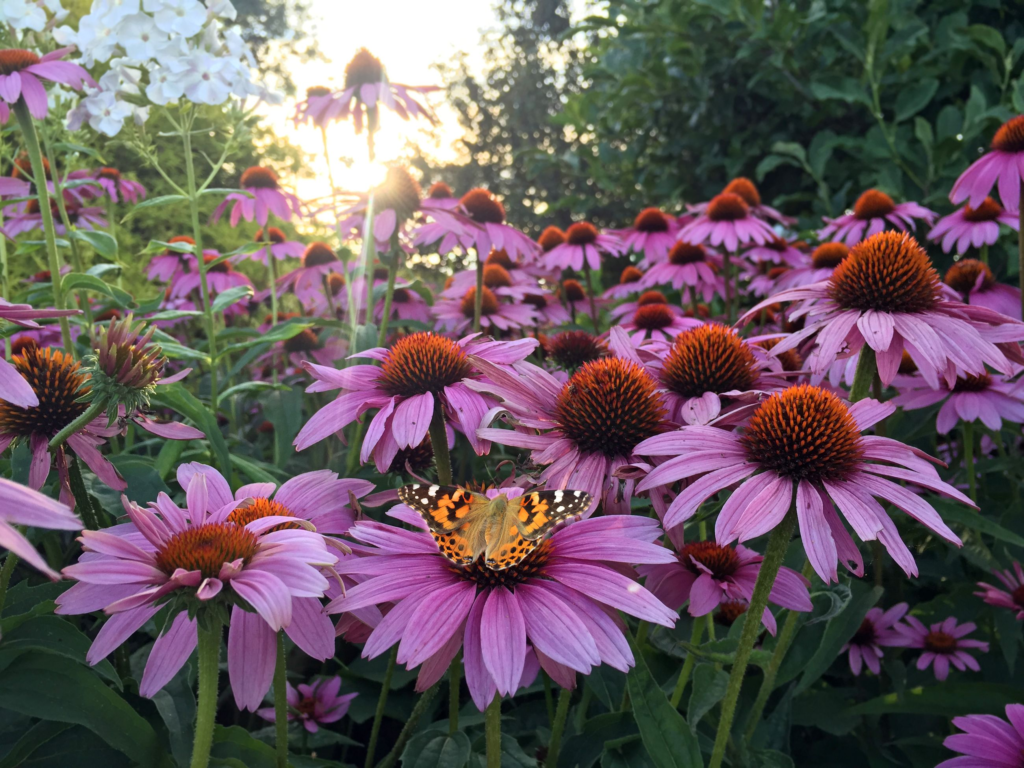
Drought-Tolerant Champions
If you live in an area with water restrictions or simply want to conserve resources, these perennials will thrive even during dry spells:
- Lavender (Lavandula): With its silvery foliage and aromatic purple blooms, lavender creates a Mediterranean atmosphere while requiring minimal water once established.
- Yarrow (Achillea): Available in shades from bright yellow to deep red, yarrow’s flat-topped flower clusters add both color and texture to water-wise gardens.
- Russian Sage (Perovskia): This woody perennial produces airy plumes of lavender-blue flowers above silvery foliage, creating a stunning effect with almost no supplemental water.
- Sedum: Succulent leaves store water efficiently, making sedums like ‘Autumn Joy’ perfect for hot, dry locations. Their late-season blooms also provide critical food for pollinators.
- Agastache (Hyssop): Highly aromatic and drought-resistant, these plants attract hummingbirds and butterflies while requiring minimal care.
According to the EPA’s WaterSense program, replacing traditional landscaping with drought-tolerant perennials can reduce outdoor water use by 20-50%. Learn more about water-efficient landscaping through their official resources.
Clay Soil Survivors
Heavy clay soil presents challenges for many plants, but these full-sun perennials can handle the poor drainage and compaction:
- Black-Eyed Susan (Rudbeckia): This native wildflower adapts to various soil conditions, including clay, while providing months of cheerful yellow blooms.
- Daylily (Hemerocallis): Few perennials are as adaptable as daylilies, which thrive in clay soil while offering an incredible range of colors and forms.
- Coneflower (Echinacea): These tough native plants develop deep roots that can penetrate clay soil, allowing them to access nutrients and moisture even in difficult conditions.
- Bee Balm (Monarda): A favorite of hummingbirds, bee balm tolerates clay soil and adds vibrant color to the summer garden.
- Baptisia (False Indigo): Once established, this native plant’s deep root system allows it to thrive in clay soils while requiring minimal maintenance.
Salt-Tolerant Options for Coastal Gardens
Gardening near the coast presents unique challenges due to salt spray and sandy soils. These full-sun perennials can handle coastal conditions:
- Sea Holly (Eryngium): With steely blue flowers and architectural form, sea holly thrives in coastal gardens where other plants struggle.
- Armeria (Sea Thrift): As its common name suggests, this compact perennial is naturally adapted to coastal conditions.
- Coreopsis: Many varieties of tickseed handle salt spray with ease while providing long-lasting color.
- Perovskia (Russian Sage): The silvery foliage and drought tolerance of Russian sage make it perfect for coastal gardens.
- Limonium (Statice): Naturally adapted to seaside conditions, statice produces papery flowers that are excellent for dried arrangements.
Low-Maintenance Perennial Garden Design
Creating a stunning full-sun perennial garden doesn’t require endless hours of maintenance. Follow these design principles to maximize impact while minimizing work:
Layer Plants by Height
For a professional-looking garden, arrange plants in layers:
- Back row (4+ feet): Joe Pye weed, tall grasses, hollyhocks
- Middle row (2-3 feet): Coneflower, black-eyed Susan, salvia
- Front row (under 2 feet): Sedum, coreopsis, dianthus
Create Year-Round Interest
Select plants with varied blooming times to ensure continuous color:
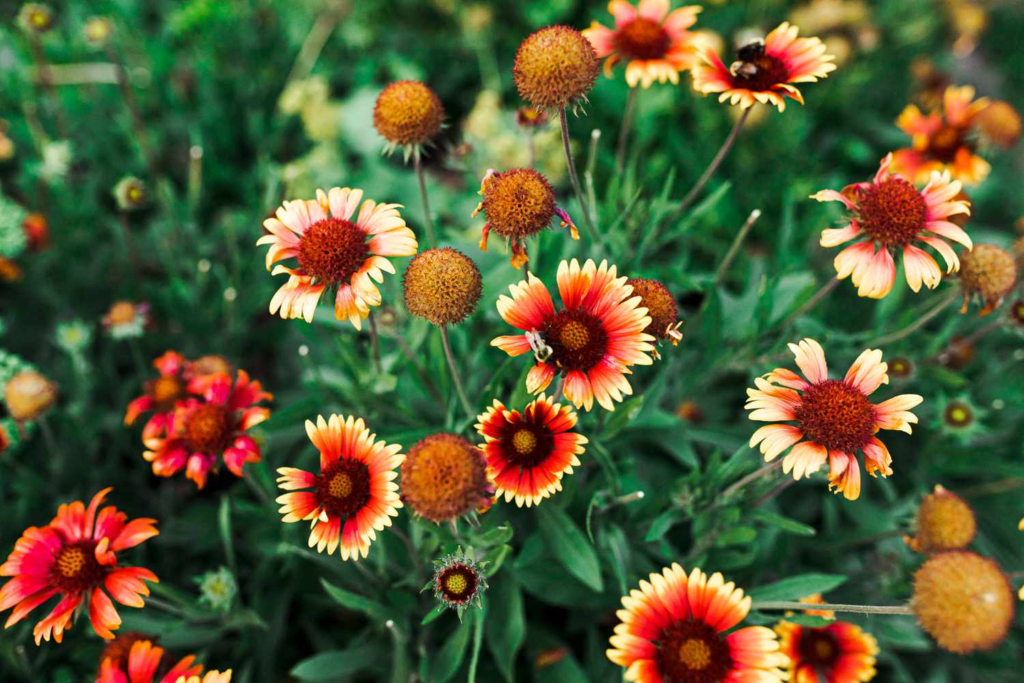
| Season | Recommended Perennials |
|---|---|
| Early Spring | Creeping Phlox, Basket-of-Gold (Aurinia) |
| Late Spring | Bearded Iris, Peony, Baptisia |
| Early Summer | Salvia, Coreopsis, Catmint |
| Mid-Summer | Echinacea, Daylily, Bee Balm |
| Late Summer | Russian Sage, Black-Eyed Susan, Agastache |
| Fall | Aster, Sedum, Goldenrod |
| Winter | Ornamental grasses, Hellebore, Evergreen perennials |
Don’t forget to include plants with interesting foliage, such as ornamental grasses, which provide structure even when not in bloom.
Group Plants with Similar Needs
For simpler maintenance, group plants with similar water and care requirements together. This practice, known as hydrozoning, ensures that you can efficiently meet the needs of all your plants without overwatering some or underwatering others.
Native Perennials for Ecological Benefits
Incorporating native full-sun perennials offers numerous advantages beyond simple beauty. According to the National Wildlife Federation, native plants require less water, fewer chemicals, and provide essential habitat for local wildlife. Consider these outstanding native options:
For Eastern North America:
- Butterfly Weed (Asclepias tuberosa): This monarch butterfly host plant produces vibrant orange flowers and thrives in poor soil.
- Joe Pye Weed (Eutrochium): Reaching heights of 5-7 feet, this impressive native attracts numerous butterfly species.
- Blazing Star (Liatris): The tall purple spikes of blazing star provide vertical interest and attract both butterflies and birds.
For Western North America:
- California Poppy (Eschscholzia californica): This drought-tolerant native offers bright orange blooms and will self-seed in favorable conditions.
- Penstemon (Beardtongue): With numerous species native to different regions, these plants attract hummingbirds and handle dry conditions.
- Gaillardia (Blanket Flower): Offering months of colorful blooms, this native thrives in hot, sunny locations.
The USDA PLANTS Database provides comprehensive information about native plants for your specific region. Access this valuable resource at the USDA PLANTS Database website.
Maintenance Tips for Thriving Full-Sun Perennials
Even low-maintenance perennials benefit from some basic care. Follow these tips to keep your full-sun garden looking its best:
Watering Wisdom
While established perennials are often drought-tolerant, they need regular watering during their first season. Deep, infrequent watering encourages deeper root growth than frequent shallow watering. Consider installing drip irrigation to deliver water efficiently directly to the roots.
Mulching Matters
Apply a 2-3 inch layer of organic mulch around (but not touching) your perennials to:
- Conserve soil moisture
- Suppress weeds
- Moderate soil temperature
- Add organic matter as it breaks down
Seasonal Care Calendar
- Spring: Cut back dead foliage, divide overcrowded plants, apply compost
- Summer: Deadhead spent blooms, monitor for pests and diseases
- Fall: Reduce watering, leave some seed heads for birds, add mulch for winter protection
- Winter: Plan next year’s additions, order seeds and plants
Division Schedule
Many perennials benefit from division every few years to maintain vigor. This chart shows optimal division timing for common perennials:
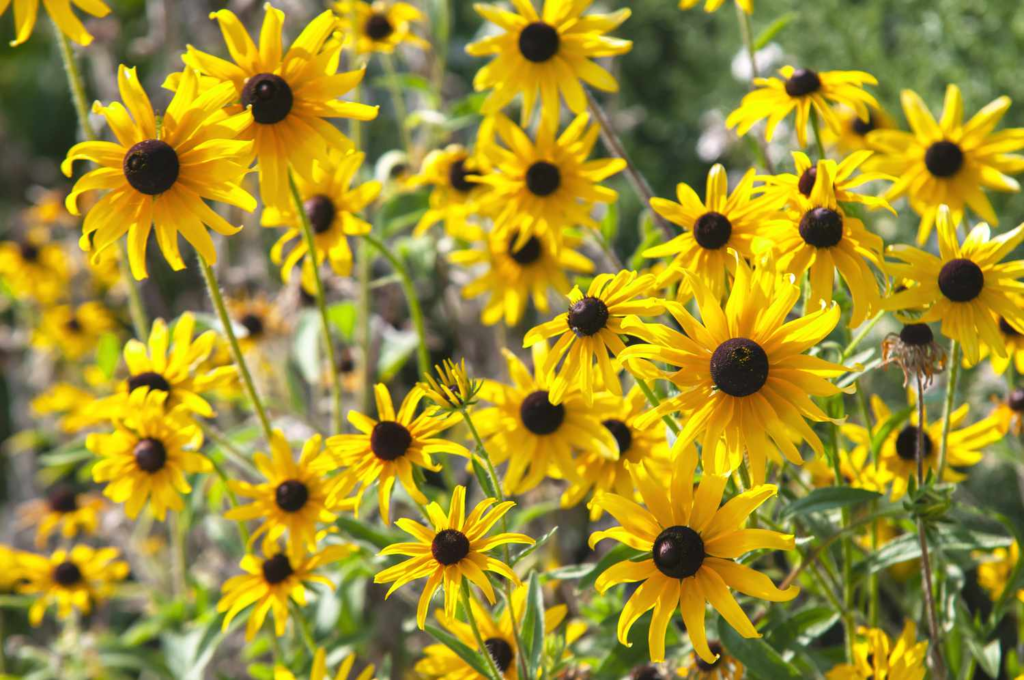
| Perennial | Division Frequency | Best Season to Divide |
|---|---|---|
| Daylily | Every 3-4 years | Spring or Fall |
| Coneflower | Every 3-4 years | Spring |
| Bearded Iris | Every 3-5 years | Late Summer |
| Black-Eyed Susan | Every 2-3 years | Spring |
| Peony | Rarely (every 10+ years) | Fall |
| Salvia | Every 3-4 years | Spring |
| Sedum | Every 3-4 years | Spring |
| Yarrow | Every 2-3 years | Spring or Fall |
Emerging Trends in Perennial Gardening
Stay ahead of the curve with these current trends in perennial gardening:
Pollinator Gardens
With growing awareness of pollinator decline, more gardeners are selecting perennials specifically to support bees, butterflies, and other beneficial insects. Top choices include:
- Echinacea (Coneflower)
- Asclepias (Milkweed)
- Monarda (Bee Balm)
- Liatris (Blazing Star)
- Solidago (Goldenrod)
Climate-Adapted Selections
As climate patterns shift, gardeners are increasingly choosing perennials that can handle weather extremes:
- Heat-tolerant varieties like Agastache and Delosperma
- Flood-resistant options like Lobelia and Iris
- Plants with wide adaptability across multiple hardiness zones
Foodscaping with Perennial Edibles
Blending ornamental qualities with edible uses, these perennials do double duty in your landscape:
- Herbs like lavender, thyme, and sage
- Fruit-bearing shrubs like blueberry and serviceberry
- Perennial vegetables like asparagus and rhubarb
Conclusion: Your Full-Sun Perennial Action Plan
Creating a stunning full-sun perennial garden is within your reach. Here’s your step-by-step action plan:
- Assess your site: Identify truly full-sun areas and note any specific challenges (drought, clay soil, etc.)
- Select appropriate plants: Choose perennials suited to your USDA hardiness zone and site conditions
- Consider bloom times: Ensure year-round interest with a succession of flowers
- Incorporate natives: Include regional native plants to support local ecosystems
- Plan for maintenance: Group plants with similar water and care needs
By following these guidelines, you’ll create a resilient, beautiful perennial garden that thrives year after year with minimal intervention. The initial investment in quality perennials will reward you with years of enjoyment and increasing beauty as your garden matures.
Remember that the most successful gardens evolve over time. Don’t be afraid to experiment, replace underperforming plants, and add new varieties as you discover them. Your full-sun perennial garden will become not just a beautiful landscape feature, but a dynamic, ever-changing expression of your personal gardening style.
